Nootropics are a class of substances that enhance and improve brain function. Also referred to as cognitive boosters, nootropics are used to improve cognition, mood, memory, motivation, and focus. Each of these areas of brain operation is reliant on different processes in the brain. So, while each nootropic is a brain-enhancing supplement, different nootropics need to be taken to affect different brain functions.
Nootropics can be natural, such as certain vitamins or herb extracts, or synthetic, which are man-made compounds such as racetams.
What Are Nootropics?
Nootropics are also routinely referred to as brain supplements, cognitive enhancers, memory enhancers, neuroceuticals, nutraceuticals, smart drugs, or neuro-enhancers.
The term nootropic originally was used in reference to a number of synthetic compounds that were thought to enhance mental competence. Now, though, the word is more broadly used to refer to any supplement that supports cognitive function. That includes many botanicals (substances obtained from plants) and nutrients, as well as the original synthetics.
This idea of altering brain function is not new. Our ancestors were using herbs and alcohol to alter brain function for the last few thousand years.
While the introduction of nootropics dates back just 50 or so years, the idea of using dietary supplements to alter the function of the brain isn’t new. Archeological and written evidence tells us that plants and herbs such as coca leaves and Ginko were used by our ancestors several thousands of years ago.
How Do Nootropics Work?
Nootropics can affect the brain in a number of ways: by influencing neurotransmitters, growth factors, hormones, neuroplasticity, brain waves, cellular energy, or cerebral blood flow.
The human brain is a very energy-hungry organ — it uses up to 25% of the body’s total energy reserves. This is because the billions of neurons require high levels of energy. Neurons are in a continual process of death and creation, injury and repair, and growth — and even healthy, undamaged neurons need plenty of energy to enable them to properly signal, receive, and process information.
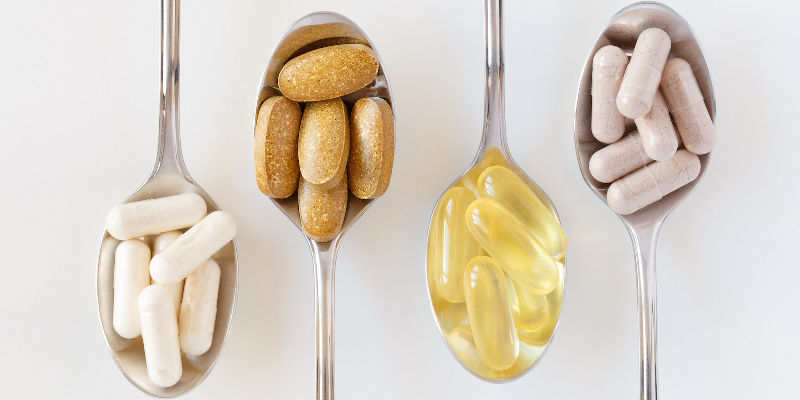
If the body can’t supply adequate energy to the brain, or if the brain’s ability to generate appropriate chemical reactions weakens, mental fatigue sets in. Long-term low levels of energy to the brain typically result in a variety of types of cognitive decline.
Nootropics can enhance brain energy in a number of ways, including:
- Supplying the brain with fuel by raising cerebral uptake of nutrients and oxygen
- Helping to carry fatty acid material to brain cell mitochondria (the part of a cell that takes in nutrients and creates energy rich for the cell)
- Stimulating more metabolic activity of brain cell mitochondria
Types of Nootropics
There are over 100 substances commonly referred to as nootropics, and they originate from several sources — so there aren’t clear-cut, agreed-upon categories that each fall into. One simple, general way to categorize nootropics is to think of them as falling into one of three broad types: natural compounds (also called dietary supplements), synthetic compounds, and prescription drugs. Within each category are dozens of nootropics. That’s far more than we can cover here, but that shouldn’t be a concern — we’ll summarize only the best brain supplements here.
Natural Compounds (Dietary Supplements)
Nootropics which are organic or herbal can be categorized as natural nootropics. These botanicals (a substance obtained from a plant) and nutrients (such as amino acids and vitamins) have been shown to support creativity, productivity, focus, memory, cognitive function, and neurological health.
Listed here are several botanical nootropics — each originates from some type of plant.
Ashwaghanda
Ashwagandha is an herb that has been used for medicinal purposes for thousands of years. Ashwagandha is classified as an adaptogen — a natural substance thought to help the body handle stress and to provide a normalizing effect upon bodily processes.
Ashwagandha has several other benefits for both the body and brain — it can counter symptoms of anxiety and depression, lower cortisol levels and blood sugar levels, and boost brain function. One recent research paper describes how Ashwagandha can improve concentration and boost energy levels.
Bacopa Monnieri (Brahmi)
Bacopa monnieri — also referred to as brahmi — is a traditional Indian (ayurvedic) herb. Bacopa Monnieri causes dendrites — the branches of nerve cells — to grow, with the result being faster processing of information by the brain. According to this paper Bacopa Monnieri has been used to reduce anxiety, improve memory, and even in the treatment of epilepsy.
Bacopa monnieri includes several compounds that have free radical-fighting antioxidant effects. It’s well-documented that free radicals are molecules that have the potential to cause cell damage. Antioxidants are compounds that inhibit oxidation — the chemical reaction that can generates free radicals.
Ginkgo Biloba
Ginkgo biloba supplements consist of extracts from the leaves of the Ginkgo biloba tree, and have been demonstrated to have positive effects on the brain. Ginkgo biloba has been shown to improve mental processing and memory in adults when taken daily for several weeks. The positive brain benefits may come from Ginkgo biloba’s ability to increase blood flow to the brain.

Lion’s Mane Mushroom
Lion’s mane mushroom has been shown to lessen the formation of amyloid-beta plaques in the brains of mice. Amyloid-beta is a protein that clumps into plaque that influences the progression of Alzheimer’s disease. More research is necessary to determine if the same occurs in humans.
According to studies lion’s mane mushrooms contain two special compounds — hericenones and erinacines — that stimulate the growth of brain cells.
Lion’s mane mushroom can be eaten cooked or raw, drank in tea form, or taken in powder form as part of a nootropic supplement.
Rhodiola Rosea
Rhodiola rosea is an adaptogenic herb. Adaptogens are plants that help the body resist stressors of all kinds — biological, chemical, or physical. This type of herb has been used for thousands of years in Ayurvedic medicine — India’s ancient holistic healing system.
Studies have found that Rhodiola rosea improves mood while decreasing tiredness in people suffering from anxiety. The herb has also been shown to heighten feelings of well-being and diminish mental fatigue in college students experiencing stress.
Listed next are several popular natural nootropics that are nutrient, or organic, based.
B Vitamins
There are several B vitamins, and they work together to convert food into energy. B vitamins are involved in just about every metabolic reaction in cells (one example of a metabolic reaction is the breaking down of raw sugar into simpler molecules, releasing energy). The B vitamins are necessary for maintenance and healthy development of both the nervous system and the brain.
B vitamins are essential in physiological processes such as maintaining healthy DNA, cellular respiration, energy production, and the proper formation of neurotransmitters. B vitamins are water-soluble, so surplus amounts are simply eliminated from the body — meaning they are all safe to consume at high levels.
Vitamin B3, or niacin, increases the production of brain-derived neurotrophic factor, or BDNF — a growth-factor protein. BDNF acts on neurons throughout the nervous system, encouraging replication and growth that is essential for learning, long-term memory, and overall cognition.
Vitamin B6 (Pyridoxine)
Vitamin B6, or pyridoxine, is required for conversion of L-DOPA to dopamine. Dopamine is a chemical that helps send signals in the brain. L-DOPA is a precursor (a substance from which another is formed by metabolic reaction) to dopamine. Thus vitamin B6 supplements can increase dopamine levels.
Vitamin B9 (Folic Acid)
Vitamin B9, or folic acid, works together with vitamin B12 to both create and repair DNA. It also helps in the formation of the red blood cell protein hemoglobin, which is the carrier of oxygen and carbon dioxide.
Vitamin B12 (Cobalamin)
As mentioned above, vitamin B12, or cobalamin, works in conjunction with vitamin B9 in the creation and repair of DNA. Vitamin B12 plays a key role in the brain and nervous system.
Vitamin B12 can play a role in preventing brain atrophy — the loss of neurons in the brain that is associated with dementia or memory loss or dementia. Research has shown that vitamin B12 supplements improved memory and slowed cognitive decline
Caffeine
A psychoactive substance is one that changes brain function, altering behavior, cognition, consciousness, mood, or perception. The most consumed psychoactive substance in the world is caffeine. While usually consumed in coffee and tea, in which it is found naturally, and sodas, in which it is added, caffeine can also be taken as a supplement — by itself or combined with other substances.
One of the ways caffeine affects the brain is an increased firing of neurons. The pituitary gland perceives this activity and reacts as if an emergency of some type is occurring. In response the pituitary gland releases hormones that in turn signal the adrenal glands to produce the hormone adrenaline (epinephrine). The release of adrenaline is why many coffee drinkers get an energy boost from their morning cup.
Caffeine also increases dopamine levels. Neurotransmitters are molecules used by the nervous system to transmit messages between neurons. Dopamine is a neurotransmitter that activates pleasure centers in certain parts of the brain. That’s why caffeine not only wakes a person up, it also elevates the mood of many coffee drinkers.
Some studies have shown that caffeine enhances short-term memory. One study determined that caffeine can improve long-term memory as well.
Phosphatidylserine
Phosphatidylserine is an amino acid derivative. It’s also nearly impossible to pronounce by most people, so it’s often abbreviated as simply PS — something we’ll do in this article. PS makes up a sizable portion of the human brain.
PS has some properties considered neuroprotective — they protect the nervous system from injury and damage. PS also can enhance the learning process. One study that included PS as part of the diet found that many of the participants experienced improved accuracy in comprehension and increased rates in making calculations. This same study determined that PS helped memory recall, which could indicate PS could help in slowing down cognitive decline.
Though the human body can and does produce PS on its own, most PS comes from food. For most, our modern diet usually doesn’t contain enough PS, which makes phosphatidylserine a good candidate as part of a nootropic supplement.
Next are some common and popular natural nootropics that are amino acids. Proteins are an essential part of all living organisms — they are an important source of energy for each individual cell in our bodies. Proteins are built from long chains of amino acids.
If proteins are considered the building blocks of life, amino acids are considered the building blocks of proteins. There are hundreds of amino acids, but only 20 of them are used in the construction of proteins. While all 20 amino acids are necessary for the body, not all of them are considered to have nootropics value.
Some amino acid nootropics are amino acid analogs. An amino acid analog is a synthetic or natural compound that resembles a naturally occurring amino acid, but is not identical to the natural version. While the word synthetic is often looked down upon as being synonymous with fake, when it comes to synthetic amino acids there is nothing negative about them. They’re chemically very similar to natural amino acids, and are created for practical reasons such as better absorption by the body when taken orally.
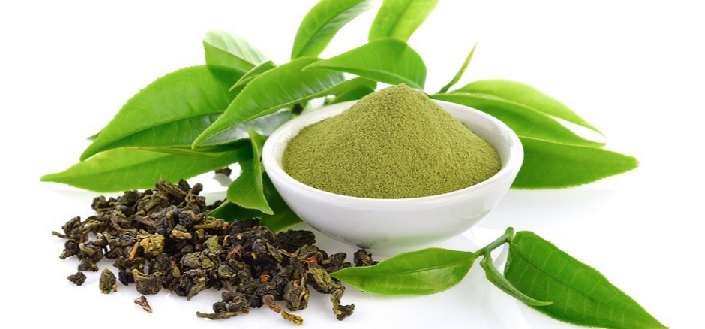
L-Theanine
Present in the leaves of some tea plants and from a few species of fungi, L-theanine is an amino acid discovered in 1949. Because of it’s strong anxiolytic (a substance that inhibits anxiety) benefits on the brain, L-theanine is one of the most important amino acids to be used as a nootropic.
L-theanine is also a dopamine reuptake inhibitor — it inhibits the transporting and uptake of dopamine, meaning that dopamine stays in the system longer. L-theanine doesn’t create more dopamine, it allows dopamine to remain in the system longer. Dopamine is one of the most important neurotransmitters in the brain — it plays a significant role in regulating many processes in the body, including sex hormone production, memory and movement.
L-Tryptophan
L-tryptophan is an amino acid best known as a sleep aid. L-tryptophan produces serotonin and melatonin, two neurotransmitters involved in regulating sleep. Serotonin also plays a role in regulating memory, mood, libido, and appetite, so L-tryptophan’s ability to produce serotonin makes it a very useful and versatile nootropics.
L-Tyrosine
Like L-theanine (discussed above), L-tyrosine has an affect on dopamine. L-theanine helps to keep dopamine in the system, so it’s useable for a longer time. L-tyrosine, on the other hand, actually plays a role in creating dopamine — dopamine is made directly from L-tyrosine in the brain. Dopamine plays a role in the regulation of hormone production, energy, and stress.
Creatine Monohydrate
Creatine monohydrate (often referred to as simply creatine) is a substance found in muscle cells. Creatine helps give muscles the energy required during high-intensity exercise or heavy lifting. Body builders feel that creatine contributes to building muscle mass and strength, and that assumption is borne out in studies.
While not actually an amino acid itself, creatine shares many similarities with amino acids, and the body can produce it from the amino acids L-arginine, L-glycine, and L-methionine.
Creatine is a popular and powerful nootropics because in addition to it’s well-known role in building muscle mass, creatine also helps to improve short-term memory and reasoning skills.
The body manufactures its own creatine, and the body gets creatine from food — but only from eating animal products (the only naturally occurring source of creatine). That may be good enough for many people, but it should be of concern to vegans and vegetarians — the amount of creatine produced by their bodies alone may leave them with low levels of this substance. For meat-eaters who want still more creatine, there are plenty of supplements available. Fortunately for plant-based eaters there are also synthetic creatine supplements that contain no meat byproducts. Synthetic creatine is created by combining two natural substances — sarcosine and cyanamide.
Synthetic Compounds
Synthetic nootropics take ingredients from nature and synthesize those ingredients into new chemical compounds designed to boost cognitive abilities.
Racetams
Racetams are a family of synthetic chemicals with a nootropic properties. There are several different nootropics categorized as racetams and though each differs somewhat, all of them function in a similar manner — they boost glucose (brain fuel), nutrients, and oxygen in the blood to better supply the brain with all these substances. The end result is an increase in concentration and focus, reduction in brain cell degeneration, and improvement in brain stamina.
Racetam is a label for a type, or subcategory, of synthetic nootropics. That means you won’t purchase a bottle of racetram capsules (or find racetram as an ingredient in a nootropic stack). Instead, you’ll buy a particular, specific racetam. A few of the most popular racetams are listed below.
Piracetam is the first racetram to be developed. Piracetam works by increasing the permeability of cell membranes, thereby improving the dispersion of oxygen to the brain cells. It also positively affects the neurotransmitter acetylcholine. Acetylcholine is important to the brain in that it is responsible for attention and logical thinking, memory formation, and other essential cognitive functions.
Aniracetam
Aniracetam is a type of racetram well-known for improving focus and concentration when working or studying. It also has stress-reducing properties that improve the mood of many people who take it as a nootropic. One study that gave subjects a number of tests geared to determine if aniracetam could reduce fear, anxiety, and stress concluded that this racetram was an appropriate treatment for people with depression, or anxiety.
Aniracetam is an interesting nootropic supplement in that some people who use it report greater sensitivity and awareness of sensory experiences with sights, flavors and colors.
Oxiracetam
Oxiracetam is considered a logic booster — it’s a good racetram choice for any student or worker involved in math or other tasks that include advanced logic.
Oxiracetam increases cognitive functions and defends the brain against cognitive decline. Many users of oxiracetam report feeling more creative and more motivated to study or concentrate at work.
Phenylpiracetam was developed by modifying piracetam — the first laboratory-created nootropic — to make it even more potent than piracetam. Phenylpiracetam was used by Russian cosmonauts to “increase cognitive, mental and physical activities” in space. One study found that single dose of phenylpiracetam caused a “significantly enhanced memory function in a passive avoidance response test.”
Pramiracetam is another nootropic developed from piracetam. Some evidence exists that its usage in aids long-term memory formation. In some European countries it is marketed as a treatment for attention and memory deficits in aging people with dementia or Alzheimer’s disease. Evidence suggests pramiracetam improves overall brain function and increases focus, which makes it popular among students wanting to enhance their mental abilities.
Fasoracetam is one of the newest members of the racetam family. The original intent was to develop it as a non-stimulant treatment for ADHD, but evidence suggests it also enhances memory and relieves anxiety and depression.
Coluracetam is another relatively new member of the racetam family. Coluracetam was originally developed to be a treatment of Alzheimer’s disease, but studies have shown that it may have a positive impact on a number of areas of cognition: improved focus, motivation, mood, reading comprehension, information retention, concentration, memory, and even vision.
The many nootropics in the racetam family of synthetic compounds are popular with people who get heavily involved in nootropics. Pure Nootropics recommends that you consider a racetam nootropic stack — a bundle of a few different nootropics (more on stacks later in this post). One popular stack consists of four of the racetams described above:
- phenylpiracetam (visit product)
- pramiracetam (visit product)
- fasoracetam (visit product)
- coluracetam (visit product)
Noopept
Noopept is a synthetic nootropic with effects very similar to piracetam, which is why you’ll often see Noopept and piracetam discussed together. Noopept is the brand name for a molecule called N-phenylacetyl-L-prolylglycine ethyl ester.
Noopept was developed in 1996 and has grown to become one of the most popular nootropic supplements. Because of its high potency and great effectiveness on improving memory and concentration it can be found in many brain booster supplements that include a combination of nootropics.
Noopept is a peptide — a short chain of two or more amino acids (proteins are long chains of amino acids) — that is known to improve cognitive functions.
One way in which noopept works is through improving alpha brain wave function, as confirmed in a recent study. Alpha brain waves play a key role in remembering patterns, figures, and facts.
Prescription Drugs (Pharmaceuticals)
Prescription nootropics consist primarily of stimulants such as those in some attention deficit hyperactivity disorder (ADHD) medications. Adderall and Ritalin are the brand names of two commonly prescribed stimulants for the treatment of ADHD. While these medications have nootropic characteristics, and work well in treating ADHD, they are not recommended for otherwise healthy people looking to simply improve their attention, focus, and memory.
Another type of nootropic available by prescription is modafinil, better known by its brand name of Provigil. Provigil is FDA-approved to treat sleep apnea and narcolepsy, but some studies indicate that it could also help with memory and learning in otherwise healthy people.
While the consensus of the medical community is that prescription nootropics for FDA-approved purposes (such as a stimulant medications for ADHD, modafinil for narcolepsy, or donepezil for Alzheimer’s) is often helpful, the use of any of these prescription nootropics solely for use as a cognitive enhancer in healthy people is controversial and warrants far more research.
Like all prescription medications, the use of prescription nootropics comes with risks of side effects and interactions other drugs and supplements. As such, a person should take them only under the care of a physician. For this reason prescription nootropics aren’t discussed in-depth in this article, and are described here only briefly for the sake of completeness.
Nootropic Stacking
It’s well-established that many nootropics complement one another — different nootropics build off the effects of one another. This has the effect of the old saying “the whole is greater than the sum of its parts.” For this reason people often combine nootropics into a stack, a term that simply refers to taking two or more nootropics together to achieve some specific effect. Stacking is a way to customize the nootropics experience.
As the popularity and use of nootropics has increased, people have formulated a near endless assortment of stacks. Anyone can buy individual nootropics in powdered form and create their own stack.
Another option is to purchase pre-formulated stacks, usually sold in pill or capsule form and marketed as “brain boosters” or “memory enhancers” or “mind enhancers.” Pre-formulated stacks have the advantage of saving a person significant research and effort — all of the selecting of the nootropics, as well as the weighing, measuring, dosing and mixing are done for you. Additionally, pre-formulated stacks are created by knowledgeable professionals and the nootropic combinations are well-researched and time-tested so you can have confidence that the product will deliver the claimed results.
An example of a powerful nootropic stack supplement is Mind Lab Pro by Opti Nutra. Mind Lab Pro includes many of the natural nootropics discussed in this article, including Bacopa monnieri (Brahmi), Lion’s Mane mushroom, Rhodiola rosea, phosphatidylserine (PS), L-theanine and the B vitamin B6, B9 and B12.
Nootropic Stack Examples
There are near endless ways of stacking, or combining, nootropics. Most “brain supplements” that can be purchased online consist of several nootropics — some are made up of over a dozen. With that said, it’s still useful to look at common, popular combinations of just two, or a few, nootropics — that provides some insight into the synergistic effect of taking more than one nootropic in a single serving.
Caffeine and L-Theanine
Caffeine, as delivered in coffee, is a part of millions of peoples’ daily routine, yet most people have no idea that it’s a nootropic. The amino acid L-theanine has a calming effect on many people so it’s a good match to take with caffeine since it can cancel the jitters and anxiousness that can accompany caffeine. L-theanine also has the effect of keeping dopamine in the system longer so in addition to counter-acting caffeine’s negative side effects, it can help in regulating memory.
Rhodiola Rosea and Phosphatidylserine
This is a good combination for people interested in improving their athleticism. Rhodiola rosea is an herb that strengthens thinking capacity, and it also enhances athletic performance. The amino acid derivative phosphatidylserine (PS) is associated with memory improvement, but is also becoming popular as a nootropic sports nutrient. Stacked together Rhodiola rosea and PS help the body react positively to stress and provide mental clarity — important factors for athletes looking to reach their peak potentials.
L-Tyrosine and B Vitamins
One of the most important neurotransmitters in the human brain is dopamine, which is made directly from the amino acid L-tyrosine in the brain. B vitamins are often stacked with L-tyrosine because they enable the ultimate conversion of L-tyrosine to dopamine. Vitamins B3, B6, B9 and B12 all play a role in helping the body fully utilize the L-tyrosine amino acid. While at first glance the title of this grouping — L-Tyrosine and B Vitamins — might seem like a simple pairing of two nootropics, all four of the listed B vitamins might be combined with L-tyrosine to produce a stack of five nootropics. From this you can see how some prepackaged brain supplement capsules can easily consist of many nootropics.



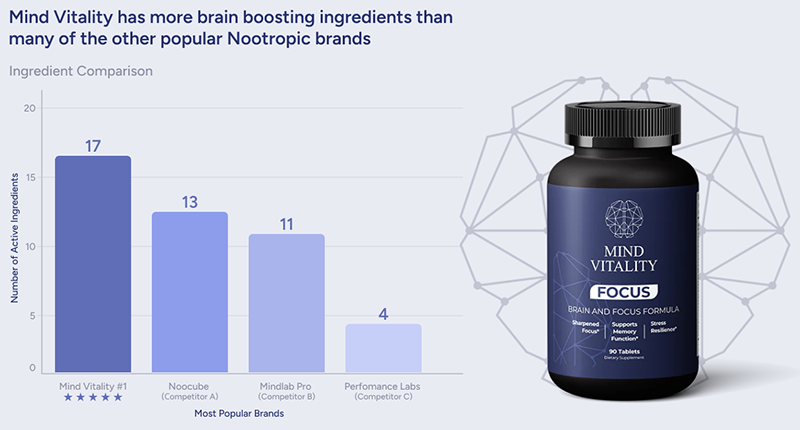
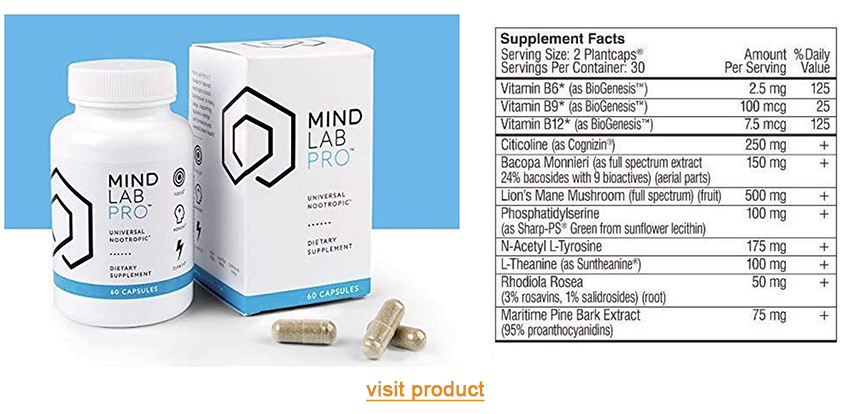


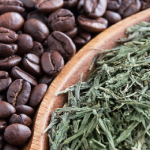
I can attest to the power of nootropics. I’ve been taking nootropics supplements for a couple of years (L-Theanine, L-Tyrosine, B Vitamins, Rhodiola Rosea specifically), and I’m quite sure my memory and concentration have improved markedly.